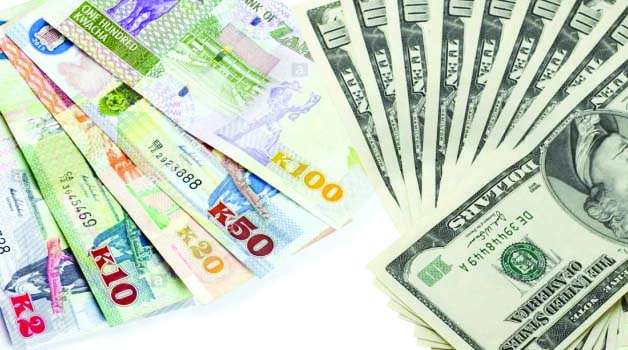By ALEXANDER NKOSI –
THE Kwacha has continued depreciating and is now trading at about K20 to one United States (US) dollar.
What exactly is happening?
Let us take a close look at some of the key pressure points.
Just like goods and services, the exchange rate is determined by demand and supply.
Note that there are a lot of factors at play but I will narrow it down to key supply and demand side factors that have a huge influence on the continued Kwacha depreciation.
On the supply side, let us take a close look at some critical factors that include US Federal Monetary policy, investment in government securities and export earnings.
These essentially determine the supply of dollars on the market.
1) SUPPLY SIDE FACTOR 1: The US dollar is strengthening because the Federal Reserve System (Fed) adopted a hawkish monetary policy stance in response to skyrocketing inflation.
A tight monetary policy strengthens the dollar against other currencies like the Kwacha.
2) SUPPLY SIDE FACTOR 2: The protracted debt restructuring negotiations and sentiments in both the local and international media over the same have increased fear in those who want to invest their dollars in government securities.
There is some hesitance because of this uncertainty surrounding debt restructuring.
It should also be noted that these investors also want to see what will happen to domestic debt as this will affect their investments.
This has reduced the supply of dollars and puts pressure on the Kwacha.
3) SUPPLY SIDE FACTOR 3: In 2022, copper prices and production were lower than projected.
This meant reduced earnings and hence less dollars.
On the demand side, I will put the factors into two groups: demand for dollars for import (goods for consumption and inputs in production) and demand to hoard dollars in anticipation of further depreciation of the Kwacha.
4) DEMAND SIDE FACTOR 1: Zambia still imports a lot of consumer goods as well as key inputs and capital equipment required for production.
In the second half of 2022, apart from importing of fuel, the country also spent a lot of dollars importing fertiliser.
Economists closely monitor demand for dollars and try to project how these dollars are used by studying the pattern of imports.
5) DEMAND SIDE FACTOR 2: The protracted debt restructuring negotiations and sentiments around the same as well as other supply side factors mentioned above have made people predict a weak Kwacha.
This has significantly increased the desire to hoard dollars.
In the first quarter of 2023, the increase in demand is largely driven by the desire to hoard dollars in anticipation of a further depreciation of the Kwacha.
Economists monitor all these factors.
They look at projections in SS1, SS2, SS3 and also analyse the pattern of demand in DD1 and DD2.
They monitor the pattern and the strength.
This informs the combination of monitory policy instruments to use and strengthening of the response.
We are facing a situation where the supply side is weak across all the three SSs and the strong demand largely driven by desire to hoard and not necessarily to increase production as evidenced by patterns in the data.
This is basically what prompted the Bank of Zambia to initially apply open-market operations in 2022 and move in with the 2.5 per cent increase in the statutory reserve ratio and 0.25 per cent increase in the monetary policy rate.
It is important to note that without these interventions, the exchange rate would be worse than it is.
Why is it important to address depreciation and volatility?
The exchange rate is one of the most important indicators monitored by both local and foreign investors and is one of the key indicators that communicate how healthy an economy is.
In our current economic state, it even becomes more important.
An unstable exchange rate and a depreciating domestic currency will push away foreign investments in government securities and long-term projects.
It will further send people into panic-buying of the dollar in anticipation of a further depreciation of the domestic currency.
This will make the exchange rate even more volatile and send the domestic currency into further depreciation.
Prices of imported consumer goods will go up and since it takes time for domestic production to increase, the cost of living will worsen.
Prices of fuel, fertiliser and other key inputs in production will go up and this will negatively affect output.
It is very important to address the detrimental exchange rate volatility as no meaningful investment and production can take place in such an environment.
A stable exchange rate and strong Kwacha will help support production and increase exports so that our domestic currency can have long-term natural strength and stability.
One would ask as to why the Kwacha has continued depreciating despite BoZ interventions.
It is important to note that such interventions can have four effects depending on how factors driving the depreciation are changing.
The first is that there is no effect, the second is that the effect is there but not big enough to halt the depreciation or reverse it, the third is that the effect is only big enough to halt the depreciation and the fourth is that the effect is big enough to reverse the depreciation and send the Kwacha into appreciation.
There is also a limit to which the BoZ can apply these measures as they can have a counterproductive effect on the economy. The other important aspect to note is that monetary policy transmission has stages as the measures take full effect on the economy.
Hence to have a full appreciation of what is happening, one needs to closely analyse changes in pressure points and how different economic entities react to monetary policy measures put in place.
The likely scenario is that the exchange rate could have been worse in the absence of these monetary policy interventions.







